By Bernie Clark, September 14th, 2015
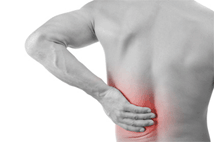 Low back pain is unfortunately a very common occurrence. It is estimated that 6% of North Americans are suffering from low back pain (LBP) at this moment, and about one-half of the population will suffer from it at some time over the next 12 months.[1] Our question is – can Yin Yoga help people who have or who are prone to having low back pain? Before we can prescribe a cure, we need to understand the causes of LBP.
Low back pain is unfortunately a very common occurrence. It is estimated that 6% of North Americans are suffering from low back pain (LBP) at this moment, and about one-half of the population will suffer from it at some time over the next 12 months.[1] Our question is – can Yin Yoga help people who have or who are prone to having low back pain? Before we can prescribe a cure, we need to understand the causes of LBP.
Structure Problems are Rarely the Cause
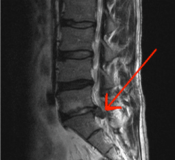 Understanding the cause of low back pain is not simple. Often people will automatically assume that their problem has something to do with their disks, those shock-absorbing circles of cartilage wedged between each vertebra. [The MRI shown here is pointing to a herniated disk.] Mysteriously, the disks are rarely the problem! One back study looked at 99 people who were completely healthy and free of LBP. They were give MRIs and 2/3rds of these people showed structural problems with their disks, but felt no pain and had no disability. Conversely, there are many studies that show people with LBP have no structural problems at all with their spines. Even more confusingly, people who had apparent structural disk problems who had undergone spinal surgery still had LBP, even though subsequent investigations showed that the surgeries completely fixed the structural problem. The conclusion reached from the above observations is that – most low back pain is not caused by structural problems in the spine.[2]
Understanding the cause of low back pain is not simple. Often people will automatically assume that their problem has something to do with their disks, those shock-absorbing circles of cartilage wedged between each vertebra. [The MRI shown here is pointing to a herniated disk.] Mysteriously, the disks are rarely the problem! One back study looked at 99 people who were completely healthy and free of LBP. They were give MRIs and 2/3rds of these people showed structural problems with their disks, but felt no pain and had no disability. Conversely, there are many studies that show people with LBP have no structural problems at all with their spines. Even more confusingly, people who had apparent structural disk problems who had undergone spinal surgery still had LBP, even though subsequent investigations showed that the surgeries completely fixed the structural problem. The conclusion reached from the above observations is that – most low back pain is not caused by structural problems in the spine.[2]
Who Gets Low Back Pain?
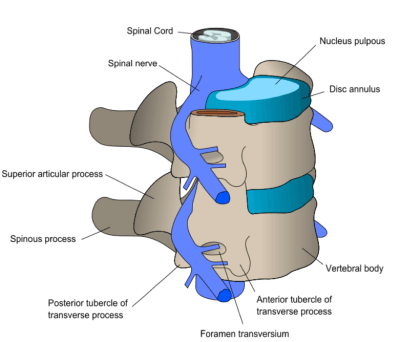 According to spine biomechanic, Stuart McGill, couch potatoes rarely get low back pain, but very flexible, fit, athletic people often do. Couch potatoes aren’t at risk because they don’t stress their backs very often, and rarely take their spines through their full range of motion. Couch potatoes are often quite relaxed. Several studies have shown that LBP is an epidemic only in the developed world. Poor people in the developing world, people who have far less access to elite medical care or high levels of nutrition, who undergo far more physical strain in their workplaces, they do not suffer LBP. Curiously, people in East Germany, before the Berlin Wall came down, had a very low rate of LBP, but once the two Germanys were re-united, the rates of LBP in the East grew to the same levels as in the West. One difference between East and West, between Developed and Undeveloped countries, is the level of daily stress people are subject to. Stress, not structure, seems to be a big cause of low back pain.[3]
According to spine biomechanic, Stuart McGill, couch potatoes rarely get low back pain, but very flexible, fit, athletic people often do. Couch potatoes aren’t at risk because they don’t stress their backs very often, and rarely take their spines through their full range of motion. Couch potatoes are often quite relaxed. Several studies have shown that LBP is an epidemic only in the developed world. Poor people in the developing world, people who have far less access to elite medical care or high levels of nutrition, who undergo far more physical strain in their workplaces, they do not suffer LBP. Curiously, people in East Germany, before the Berlin Wall came down, had a very low rate of LBP, but once the two Germanys were re-united, the rates of LBP in the East grew to the same levels as in the West. One difference between East and West, between Developed and Undeveloped countries, is the level of daily stress people are subject to. Stress, not structure, seems to be a big cause of low back pain.[3]
Stress is a Major Cause of Low Back Pain
Many corporations recognize that their employees are missing work due to Low back pain. The Boeing corporation studied this problem and found that the time lost due to LBP did not correlate to the work environment, the physical demands of the job or even the chairs that workers sat in: the single most important factor was job dissatisfaction! People who disliked their work had more chronic back pain. The purely orthopedic approach to dealing with low back pain seems to be missing the single most important cause – stress![4]
Try this experiment: imagine you are an actor and your role requires you to display genuine anger – do so. Right now. Adopt an angry look, stance, posture. Now, try for fear … now try for frustration. All that is probably pretty easy, even for non-actors, but now for the real challenge: act like you are strongly feeling on the inside any of the above emotions, but don’t show any of the signs on the outside.
 Did you notice that when you tried not to show your anger, frustration or fear that your whole body tensed? When your muscles contract, the body shrinks. Now, imagine that you are doing this for many hours, every day – your body will become habitually shrink-wrapped and tight. Chronic tension will develop.
Did you notice that when you tried not to show your anger, frustration or fear that your whole body tensed? When your muscles contract, the body shrinks. Now, imagine that you are doing this for many hours, every day – your body will become habitually shrink-wrapped and tight. Chronic tension will develop.
Fascia and the Low Back
Our fascia is like a 3-dimensional body stocking wrapping and investing all our muscles and organs. This is a richly innervated area with 10 times more nerve endings than our muscles have. There are many different kinds of nerve endings in our fascia: Ruffini, Pacini, and Golgi receptors plus nociceptors. These nerves can monitor the local environment and measure strain, chemical (pH) changes, temperature and pain. When conditions are right, such as when we are physically injured or psychologically stressed, the fascia contracts. If the conditions become chronic, so too the contraction becomes chronic. Robert Schleip, a well-known fascia researcher, noted that people with LBP have more nociceptors in their fascia than those who don’t have LBP. Unfortunately, it is not clear whether the presence of extra nociceptors is a result of chronic back pain or the cause of the back pain.[5]
The Nervous System & the Immune System and Fascia restriction
When we are sick, we lose mobility physically. We have all noticed this – when you have a cold or the flu, you feel stiff. You ache and cannot move as easily as you once could. You have stiffened up and your body has become tight: there is tension all over. When we are sick our cells release chemical messages, called cytokines, and one particularly interesting one is called transforming growth factor beta (TGF-Beta): TGF-Beta influences the growth of Killer-T and Beta cells, causes other cells to undergo apoptosis (cellular death), and increases the release of other cytokines. TGF-Beta is an important part of our immune function, but it has another effect unrelated to our immune response. TGF-Beta is an agent that increases production of myofibroblasts, and causes myofibroblasts to contract.[6] Myofibroblasts are found in our fascia, and when they tighten up, we feel the effects all over our fascial body stocking. When we are stressed or sick, when our immune system is ramped up, some of the chemical messengers being released cause our fascia to tighten. This may be beneficial in the short term, the body often contracts during times of injury to protect itself, but if we are chronically stressed or sick, then the contraction becomes chronic as well. This chronic contraction of our fascia can also lead to low back pain.
How can Yin Yoga help reduce Low Back Pain?
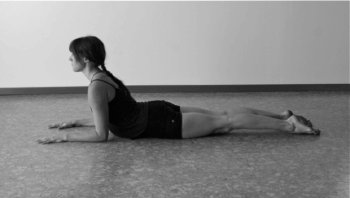 Since psychological stress has been directly implicated in chronic low back pain and since stress can also trigger chronic over-activation of the immune system, leading to higher levels of contraction-creating cytokines and chronic inflammation, reducing psychological stress and releasing chronic tension should help reduce low back pain. All yoga can help to manage and reduce both our levels of psychological stress and the negative reaction to psychological stress. Yin Yoga, being a quiet practice that cultivates inner and outer stillness, is particularly effective at reducing both the causes of psychological stress and our reaction to such stress. Yin Yoga can also help to release and lengthen chronically contracted fascia.
Since psychological stress has been directly implicated in chronic low back pain and since stress can also trigger chronic over-activation of the immune system, leading to higher levels of contraction-creating cytokines and chronic inflammation, reducing psychological stress and releasing chronic tension should help reduce low back pain. All yoga can help to manage and reduce both our levels of psychological stress and the negative reaction to psychological stress. Yin Yoga, being a quiet practice that cultivates inner and outer stillness, is particularly effective at reducing both the causes of psychological stress and our reaction to such stress. Yin Yoga can also help to release and lengthen chronically contracted fascia.
Pain is a big cause of stress. Pain is transmitted by the nociceptors in our fascia. However, nociceptors are also pressure sensors – they report on the amount of physical pressure that the body is experiencing. Fortunately, nociceptors cannot report on both pain and sensation at the same time: they preferentially report on pressure over pain. You have noticed this: when you bang your shin against a table, it hurts, so you rub it … the sensation of being rubbed overrides the pain and you no longer feel the pain in your shin. We can rub away the pain. When we stress the fascia of our low back while marinating in a Yin Yoga posture, and pay attention to the sensations there, the nociceptors switch from being pain receptors to pressure receptors. With less pain, there is a reduction in the nervous system stress response. With less pain, there is less psychological stress, which in turn lowers our immune system response.
Another tool we use in our yoga practice is the breath. By slowing down the breath we activate the parasympathetic nervous system, and turn off the stress inducing sympathetic nervous system.[7] This helps to reduce chronic inflammation and chronic contraction of the fascia in the low back.
A Note of Caution
While very rare, there are some causes of low back pain that require quick medical attention and may become life threatening or can result in permanent disability. If you experience any of the following symptoms, seek medical assistance right away:
- Fever with increasing pain that doesn’t respond to normal pain killers
- Acute stomach and low back pain that prevents you from standing up straight
- Leg weakness that grows progressively worse
- Loss of bladder or bowel control
- Unexplained weight loss along with pain
Yin Yoga for the Spine
Will Yin Yoga help with your specific low back pain? We can’t say – as mentioned there are many potential causes of LBP. Check with your health care provider. If he or she agrees that it is worthwhile to try Yoga, try the short Yin Yoga practice targeting the spine as shown in our YouTube channel, and work your way up to longer practices. Or, try out the flow for the spine shown below, from the Complete Guide to Yin Yoga, or the longer spine flow founded in YinSights online. If the postures are unfamiliar to you, you can review them on the Asana section of www.YinYoga.com. Pay attention! Come out of the pose earlier than normal for the first few practices. Work up towards the longer hold times. Notice what you are feeling while in the postures and when you come out of the poses, and even over the next 48 hours. Breathe. Practice with intention and attention.
The intention is to heal, and relax.
Pay attention to sensations, and relax.
A Yin Yoga Flow for the Spine
- Meditation
- Butterfly (3 ~ 5 minutes)
- Half-Butterfly (3 ~ 5 minutes per side)
- Caterpillar (3 ~ 5 minutes)
- Sphinx (3 ~ 5 minutes)
- Seal or repeat Sphinx (3 ~ 5 minutes)
- Bananasana (3 – 5 minutes per side)
- Reclining Twists (3 – 5 minutes per side)
- Shavasana
Finally, Stuart McGill and I created an 8-hour course on called Your Spine, Your Body — the Course, hosted by Yoga International. For students and teachers who want both a deeper understanding of the mechanics of the low back and practices to safely work this area, this course is highly recommended. [Use this code to get 15% off the price: YINYY15.]
Footnotes:
- — See The Prevalence of Low Back Pain in Adults: A Methodological Review of the Literature by Patricia Loney and Paul Stratford in Physical Therapy April 1999 vol. 79 no. 4 384-396
- — See The Science of Mindfulness: A Research-Based Path to Well-Being by Ronald Siegel.
- — Ibid.
- — Ibid.
- — See the talk Lumbar Fasciae: A Frequent Generator of Back Pain. Latest Research Findings and Clinical Implication by Robert Schleip at the Deutsches Osteopathie Kolleg DOK Symposium 2013 auf der Fraueninsel im Chiemsee
- — Ibid.
- — See The Yinside of Breathing
